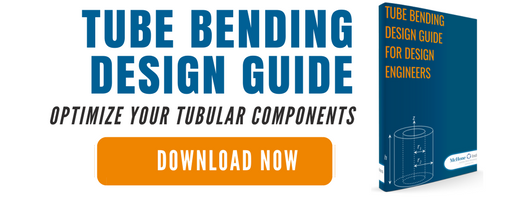 Metal or plastic? That's the question many ask when designing -- or buying -- fertilizer spreader blades and parts. And while both materials are viable options that can contribute to a great end product, there are a lot of factors fertilizer spreader manufacturers should consider when weighing which one to use.
Metal or plastic? That's the question many ask when designing -- or buying -- fertilizer spreader blades and parts. And while both materials are viable options that can contribute to a great end product, there are a lot of factors fertilizer spreader manufacturers should consider when weighing which one to use.
Let’s take a look at both metal and plastic, and the pros and cons of each, when it comes to fertilizer spreader components:
Fertilizer Spreader Manufacturers’ Guide to Using Metal or Plastic
Cost is always a big deciding factor in pretty much anything manufacturing-related, but are other design aspects you should take into account. When choosing between metal or plastic for your fertilizer spreader design, also think about:
- Durability
- Uniformity
- Size
- Heat resistance
- Wear resistance
- And more!
Plastic Fertilizer Spreader Advantages
The two biggest benefits to plastic fertilizer spreader parts is that they're fast to make and easy to make. Naturally, this also means they’re affordable to produce. This allows fertilizer spreader manufacturers to pass on the cost savings to their customers, which makes for an overall cheaper product.
A secondary benefit is that plastic tends to be lighter in weight than metal, which can make the spreader easier to operate. Grandmas everywhere will thank you.
Plastic Disadvantages
Plastic parts also have some notable drawbacks, some more obvious than others.\
For instance, they tend to be far less durable than metal parts, so chances are they'll need to be replaced sooner than steel components. This can make using plastic parts a challenge for those who need heavy-duty spreaders that don’t get beat up easily.
What's more, plastic has a comparatively low threshold for:
- Corrosion
- High temperatures
- Acidity (grass is highly acidic)
The bottom line is that while a spreader made with plastic parts may cost less, chances are customers will be dissatisfied with your product’s longevity.
Metal Fertilizer Spreader Advantages
Metal has several key advantages compared to plastic both in general terms and specifically to lawn and garden products.
For starters, it's very durable and heat-resistant, so owners of spreaders made with metal parts can expect to enjoy their products for many years. Spreaders that are used regularly or for demanding applications will last far longer than their plastic counterparts.
Also, while many people associate metal with being a more costly material than plastic, when it's made in large quantities, metal is very affordable. This is a big benefit for larger spreader manufacturers that need high-volume orders.
Metal Disadvantages
Even we admit metal has some disadvantages.
For starters, the startup costs of making metal parts are typically more expensive, as there's a lot of tooling that goes into metal fabrication. While these costs make sense for spreader makers who are producing a large run of products, metal may not be sensible for smaller manufacturers.
The other main disadvantage associated with metal working is that most metals require some sort of secondary finishing process. That's not typically the case with plastic parts, which means metal parts can take comparatively longer to get to market.
Understanding Product Life Cycle
Like we said, you can't really go wrong with either metal or plastic when it comes to spreader parts. But if you're looking to create a durable, strong, and long-lasting piece of equipment, we suggest using metal.
The costs of producing such spreaders may be more up-front, but it's important to understand the total life cycle of the product. In the end, many customers will appreciate paying a little more for a spreader that will last longer.


